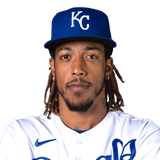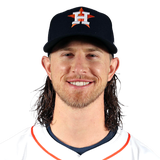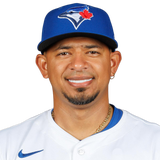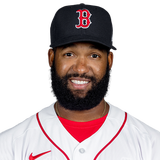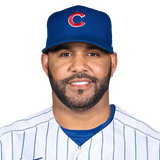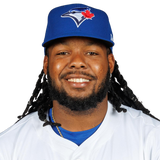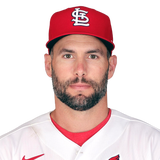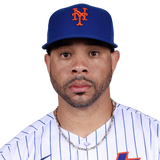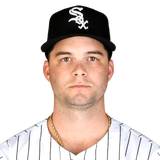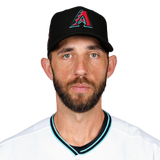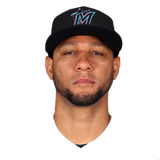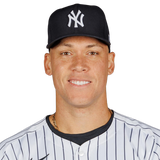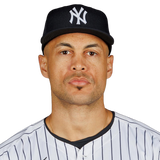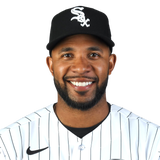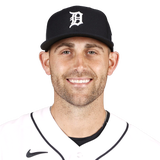Some people think of busts as players who won't return full value on their production when you draft them, and maybe it should be as simple as that. But many think of the term in a more grandiose way. To them, a bust is someone who must be avoided at all costs. A bust will wreck you!
So I put together this list with that sentiment in mind, making the downside case for some high-dollar players rather than simply nitpicking ADP. It doesn't mean the upside for these players isn't worth pursuing in some cases, but as a general rule, I'm avoiding them. And I suggest you do, too.
Since this is Version 2.0, I've grouped players by whether they made the cut the first time around. We'll begin with the newcomers.
The Newcomers
It couldn't get any worse than last year, right? Coming off a Cy Young season in which he had a 1.89 ERA, Blake Snell sputtered out of the gate, then broke his toe, then needed surgery to remove loose bodies from his elbow, making only 23 starts.
That's concerning in and of itself, of course, especially since he needed a cortisone shot in the same elbow in February. But just as concerning as the starts he missed, I think, were the ones he made. I'll grant that he was better than the numbers showed. His swinging-strike rate would have led all qualifiers His xFIP was 3.31, and his xERA, according to Statcast, was 3.02 — actually better than during his Cy Young-winning season. But in only two of his 23 starts did he go more than six innings.
That's not an ace workload, and it helps explain why he won only six games for a 96-win team. But the Rays have always handled him with kid gloves. Looking back, it's fairly amazing he won 21 games in 2018 while averaging less than six innings per start. And again, that was with a 1.89 ERA. You think they're going to ride him any harder with a bum elbow?
Of course not, and of course he'll never have an ERA that good again. It all leads me to wonder how right things could actually go for Snell and if it's enough to make up for all that could go wrong vis-a-vis his health. I get that high-end starting pitching is precious, and so you can't get too stuck on the downsides. But he's being elevated even among them, going 12th overall at the position. Seems too optimistic.
I get it. There's a shortage of stolen bases, and Adalberto Mondesi is the odds-on favorite to lead the majors in them. He was only three off the lead last year despite playing in just 102 games, and maybe that's enough to justify him going so high in Rotisserie leagues. His ability to carry you in that ever-so-scarce category makes whatever he contributes at the plate secondary.
But it seems to ignore how colossally wrong things could go for him. After seeming like he was on the right track to end 2018 and begin 2019, he bottomed out as a hitter in June, his strikeout rate swelling to worst-in-baseball range as he hit .233 with a .597 OPS over his final 46 games. And then he had surgery to repair a torn labrum in his shoulder — a procedure that can compromise a hitter's power stroke, especially early on. But surely he'll make up for it with his Youk-ilian on-base skills (#sarcasm)!
Maybe things will go the other way and Mondesi will finally put it all together, getting the strikeouts under control and growing into his raw power. He remains a fountain of potential at age 24, so I'm willing to hear that argument. But I'm here to talk downside, and if he hits .220 with an irrelevant number of home runs, I'm not sure how much the stolen bases will matter.
Josh Hader has led all relievers in strikeouts the past two seasons, with a total that compares to some middling starting pitchers. For that reason, he would be an asset in Rotisserie and other 5x5 leagues even if he wasn't in line for saves. But he of course only goes as high as he does because he's in line for saves — relievers who contribute them are almost universally better than ones who don't — and Hader deserves to be the first reliever off the board for however long he's in line for saves.
But what if the Brewers preferred he wasn't in line for saves? Manager Craig Counsell made that preference clear in 2018, when his intended closer (Corey Knebel) was on and off the IL and yet he refused to hold back Hader for the ninth, preferring to make him available for higher-leverage and often multiple-inning scenarios. The majority of Hader's 12 saves that year were ones where he entered the game prior to the ninth inning but just kept pitching.
It was only when Knebel needed Tommy John surgery in 2019 that Counsell finally succumbed, but now Knebel is again. And the delayed start to the season means he should be available from Opening Day. It's a critical development because managers are more emboldened to try something different at the start of the season rather than disrupt what's already working. And regardless of what he says, Counsell's history suggests we won't know his intentions until we see the Brewers' first couple save chances.
I'm more likely than the average Fantasy player to buy into the mid-career breakout and am perfectly willing to invest in players like DJ LeMahieu, Marcus Semien and Jorge Soler. But Eduardo Escobar's big breakthrough last year just smells funny to me. I mean, 35 homers and 118 RBI? Unlike for those other three, the batted-ball data doesn't back it up, with the expected stats all suggesting Escobar is more like the guy who had 23 homers and 84 RBI in 2018, which was a decent-sized breakthrough in its own right.
Those numbers still have value in Fantasy, but they make Escobar out to be more like a Ryan McMahon type than the second coming of Mike Moustakas, who's being drafted just one round ahead of him on average. Even if you don't buy the data argument and think the power breakthrough is legit, for whatever reason, on what planet is Escobar getting that many RBI again? He was tied for fifth-most in the majors. He's not even the fifth-best hitter in his division.
I left Danny Santana out of Busts 1.0 because I thought he was too obvious. In all the industry drafts I've done this year, I've never seen anyone excited to draft him. It's more a matter of necessity. He's one of the last stolen-base threats who isn't a zero for power, and the ability to slot him at first base, a position with so few base-stealers, can come in handy.
But I can make a move out of necessity while still acknowledging the bust potential, as I've demonstrated in this space with Adalberto Mondesi, Fernando Tatis and Jonathan Villar, who all go as high as they go mostly out of stolen base desperation. And seeing as Santana goes even earlier in Head-to-Head points leagues, where stolen bases aren't even a necessity, it's possible the risks haven't been highlighted enough. At 29, he's has been around a while now, and to say last year's performance came out of nowhere would be an understatement. He had .219 with a .575 OPS over the previous four years.
Now, he did show some promise as a rookie in 2014, and he did demonstrate 90th-percentile exit velocity last year. His expected stats, according to Statcast, weren't so far off from his actual ones, so it's not crazy to think he could do it again. But as much as he strikes out and as little as he walks, he's performing a tight-rope walk. Any decline could be precipitous enough to cost him his job.
The Holdovers
This Fernando Tatis pick is one of those that makes my particular definition of "bust" so critical to understand because the chance of him being an impact player is much higher than not. But when I weigh the downside, particularly at his going rate of 18th overall, I don't know that he comes out ahead on the risk/reward spectrum. Yeah, maybe he turns out to be a five-category stud who's in the conversation to go No. 1 overall next year — that's how things were looking for the 84 games he was healthy. But he finished the year with an impossible .410 BABIP.
True, it's 2020, and we know now that the way a hitter impacts the ball changes the likelihood of him delivering a high or low BABIP, but Tatis doesn't exactly stand out in that arena either. Fittingly, his xBA was only .259 and his xwOBA only .345, neither of which would fit an early-round profile if not for the steals.
About them ... Tatis went 13 for 16 on stolen bases in his first 49 games, but only 3 for 6 in his final 35 — and, no, the time he missed with a hamstring injury isn't the dividing line there. He just stopped running, as most power hitters do eventually, some sooner than others. If it's the new normal for him and the hitting regresses like the advanced stats say it should, he might not even be on Jorge Polanco's level among shortstops. A lot of ifs, sure, but none of them are far-fetched.
Jonathan Villar at 52nd overall still strikes me as a textbook case of those who haven't learned from history being doomed to repeat it. We've been down this road before with him, reaching into the fifth round for his stolen bases after a year in which he hit decently, and it ended in disaster back in 2017.
Of course, that Brewers team was going places and couldn't afford to wait out his struggles. This Marlins team isn't. Still, as a hitter, he leaves plenty of reason for skepticism. He makes weak contact, he doesn't elevate the ball, and he's undisciplined. No surprise, then, that he greatly outperformed his peripherals last year. He has to play to run, and if he regresses to being more of a .240 hitter with poor on-base skills, the Marlins might turn center field over to one of their many outfield prospects nearing the bigs.
The venue change doesn't help Villar's case either. We don't know exactly how the new dimensions at Marlins Park will play, but it won't be Camden Yards, where he hit 16 of his 24 home runs last year.
This one could clearly go either way. Vladimir Guerrero was almost universally regarded as the top prospect in baseball entering last year, and I went so far as to call him the best pure hitting prospect I've ever seen. Clearly, he disappointed. He didn't embarrass himself, but he disappointed, and he didn't just disappoint with the production. The actual skill indicators left something to be desired.
Now, that doesn't mean he didn't impress in any way. He put on a show during the Home Run Derby, as you might recall, and made contact at an uncanny rate for such a young hitter. He also authored some of the hardest-hit balls in all the majors. But his average exit velocity was suspect and his average launch angle downright sad.
The problem is he's getting drafted like none of it happened, which might make sense if we were working with a weakened hitter pool and had to scour every nook and cranny for upside, but we're clearly not. In fact, third base is so deep that No. 15 in my rankings, Josh Donaldson, actually had higher point-per-game average last year than No. 9, Eugenio Suarez, so there are just redundancies all over.
Guerrero will eventually be a star, and maybe he improves his launch angle in Year 2 the way Juan Soto did and takes off. But it's unnecessary risk at a position where you can't go wrong waiting.
Considering he's still going 65th overall in drafts, ahead of several first basemen who outperformed him on a per-game basis, I get the sense Fantasy Baseballers are a little too sanguine about Paul Goldschdmidt's career-worst season. After back-to-back single-digit efforts, we can all rest comfortably in the knowledge he's not a base-stealer anymore, so it's the bat that has to carry him. And given the number of first basemen or just hitters in general with the capacity for 30-plus homers in today's environment, it needs to be a special bat to justify the upcharge.
I'm not sure it is. He's now 32 and playing his home games in a much tougher venue than where he spent most of his career. His exit velocity has also been dropping little by little, but perhaps the clearest indication that his bat is slowing down is how pitchers are approaching him. He saw more first-pitch strikes than ever last year, a sign they don't fear him as they once did, and had his worst swing-and-miss rate since his rookie season. Most concerning of all, though, is that he hit just .232 against four-seam fastballs. He's a career .309 hitter against them.
Pham is that disciplined sort of hitter who normally wins my undying affection, and longtime readers may remember he's the one I hyped to the hills during draft prep season just a couple short years ago. But I don't like the way things are trending for Pham, and it's easy to overlook, given his late start, that he'll be 32 on opening day. Once a player enters his 30s, he's at risk of rapid regression, sometimes without warning. So when there is warning, we need to take it seriously.
In an environment where fly balls seem to turn into home runs at random because the drag on the ball is so low, the players most at risk of being left behind are the ones who don't elevate. Pham was never great at this, but he has taken steps back the past two years, to the point his ground-ball rate was fourth-highest in baseball last year, into Eric Hosmer territory. Add that he also had a career-worst barrel rate, and it's fair to ask how much longer home runs will be part of his skill set. He's obviously going to run less as he gets older, too. Shave a handful off those home run and stolen base totals, and there's not a lot separating Pham from, like, Brett Gardner.
There's a sentiment in the Fantasy-playing world that a player coming off a bad season couldn't possibly be a bust candidate. The bust already happened, and to declare it thereafter would be chasing the result. But what if I think Andrew Benintendi is genuinely as bad as his worst season? Would it matter, then, that you're getting a former top-10 outfielder around 30th at the position?
I can't overstate just how deep this hitter pool is. Big production is still available beyond the 25th outfielder — Max Kepler, Michael Brantley and Michael Conforto, just to name a few at the same position — and what Benintendi offered last year, by comparison, was miserable. The totals speak for themselves, but to use Head-to-Head scoring for simplicity's sake, his point-per-game average was worse than Jon Berti and Anthony Santander. And the advanced numbers say there was nothing unlucky about it. It wasn't just confined to last season either, contrary to popular belief. Since the All-Star break in 2018, he has contributed just 15 home runs and 14 steals over 770 at-bats.
Those numbers would be great from Nick Markakis, but from a top-100 pick, you have to get more. You have to. Yeah, at 25, there's still time for Benintendi to change course, but it's going to take a radical transformation that I'm not willing to bank on.
Rhys Hoskins gave his backers their victory lap when he homered 18 times in his first 34 games as a late-season call-up in 2017, but it's kind of been all downhill since then. The slide has been subtle, but it's undeniable now that he's just no good for batting average. The fly-ball tendencies are too extreme, his game totally reliant on the home run, and since he's not impacting the ball like an Aaron Judge or even a Pete Alonso, the hard-hit rate being decidedly middle of the pack, there aren't enough home runs to make up for all the outs on balls in play. It's how he managed to put together a four-month stretch beginning on June 1 last year in which he hit .198.
Nothing fluky about where his batting average ended up either. His .221 xBA was second-lowest among players with at least 500 plate appearances. He's also a liability defensively, so about the only thing saving him at a time when right-handed power hitters are totally dispensable is his knack for drawing walks, which led to an impressive .364 on-base percentage last year. That's obviously of little help in traditional Rotisserie leagues, though, and any drop-off there might get the Phillies sniffing around for alternatives.
Listen, I don't mean to be a total downer about Madison Bumgarner, who last year showed signs of regaining some of the skills he seemingly lost in the dirt bike accident of 2017. The velocity on his most pivotal pitch, the cutter, was back, averaging about what it did in 2016, his walk rate was back to being elite, and his swinging-strike rate, recovering from a nasty downward spiral, was actually the second-best of his career.
It didn't change the actual results, though. His strikeout rate wasn't great, and he was vulnerable to the long ball. His saving grace was that he pitched his home games at the friendliest of pitcher's parks, where he put together a 2.93 ERA compared to 5.29 on the road. The previous year was just as extreme, 1.63 compared to 4.97, which is why there's legitimate concern his move to Arizona could be the nail in the coffin. Again, it's not hopeless for Bumgarner, who's still only 30, but his going rate assumes he'll be the same guy he was in San Francisco last year.
This past year was a career year for Yuli Gurriel that placed him among the elite first basemen, top 10 in both 5x5 Rotisserie and Head-to-Head points leagues, and I can point to at least one skill change that backs it up. He elevated the ball more, improving his launch angle in deference to an era that favors fly balls. Still, power breakthroughs for 35-year-olds generally aren't something you should depend on, particularly when they're confined to such a small period of time. Of Gurriel's 31 homers, 20 came during a 40-game stretch from Jun 23 through Aug. 14. He hit .267 with six home runs in 33 games the rest of the way.
Gurriel has his strengths, of course. He rarely strikes out, which makes him a reliable source of batting average. But prior to last year, the power was too limited for him to be more than a fringe contributor at first base. So there's substantial risk right there, just having to trust in the idea of a 40-game stretch being the new standard for a 35-year-old. Factor in that the Astros are trying to work Kyle Tucker into the lineup, with first base having been mentioned as a possibility, and Gurriel may not have so much job security if he regresses to his former production, much less suffers the sort of decline that normally afflicts players his age.
The Dropouts
Reason for removal: Look, I was as worried as anybody about Aaron Judge getting shut down again for the stress fracture in his rib that had an entire offseason to heal up and didn't, but he may have approached his recovery a little smarter this time around with a full diagnosis. He has been swinging a bat for a while now, so I think if the injury wasn't fully recovered still, he would have felt it by now. I feel like it's reached the point where the best power hitter in the game — a surefire MVP candidate if he's healthy — is falling unfairly. If he lasts to Round 6, I can no longer resist.
Reason for removal: Maybe I've just been listening to Chris Towers too long, or maybe all the Giancarlo Stanton hate has downgraded him to a point where it's no longer so sensible to pass him over. Sure, he's a constant injury risk, and yes, his strengths don't stand out as much in a power-laden environment, but there's little question he'll be must-start when healthy.
Reason for removal: I get it now. When I first wrote Busts 1.0, I hadn't yet fully experienced the desperation surrounding stolen bases. Nobody wants to have to rely on Elvis Andrus. Nobody wants to make him his first choice at shortstop. But if you get squeezed out in steals, a 13th-round pick for a guy who had 30 of them last year isn't so ridiculous, as long as you recognize that he's no longer of much help with the bat and is no lock for another 30-steal pace this year. His Head-to-Head ADP shows everyone is on the same page there.
Reason for removal: Yeah, things could go disastrously wrong for Matthew Boyd this year. He's especially vulnerable to the long ball at the worst possible time to be, which led to a 5.81 ERA over his final 18 starts. But his kind of strikeout potential is so rare for where he's drafted that I find I'm often excited to take him. Risks are presumed for anyone you'd take in the 13th round anyway, so upside should probably be the focus for Boyd.




